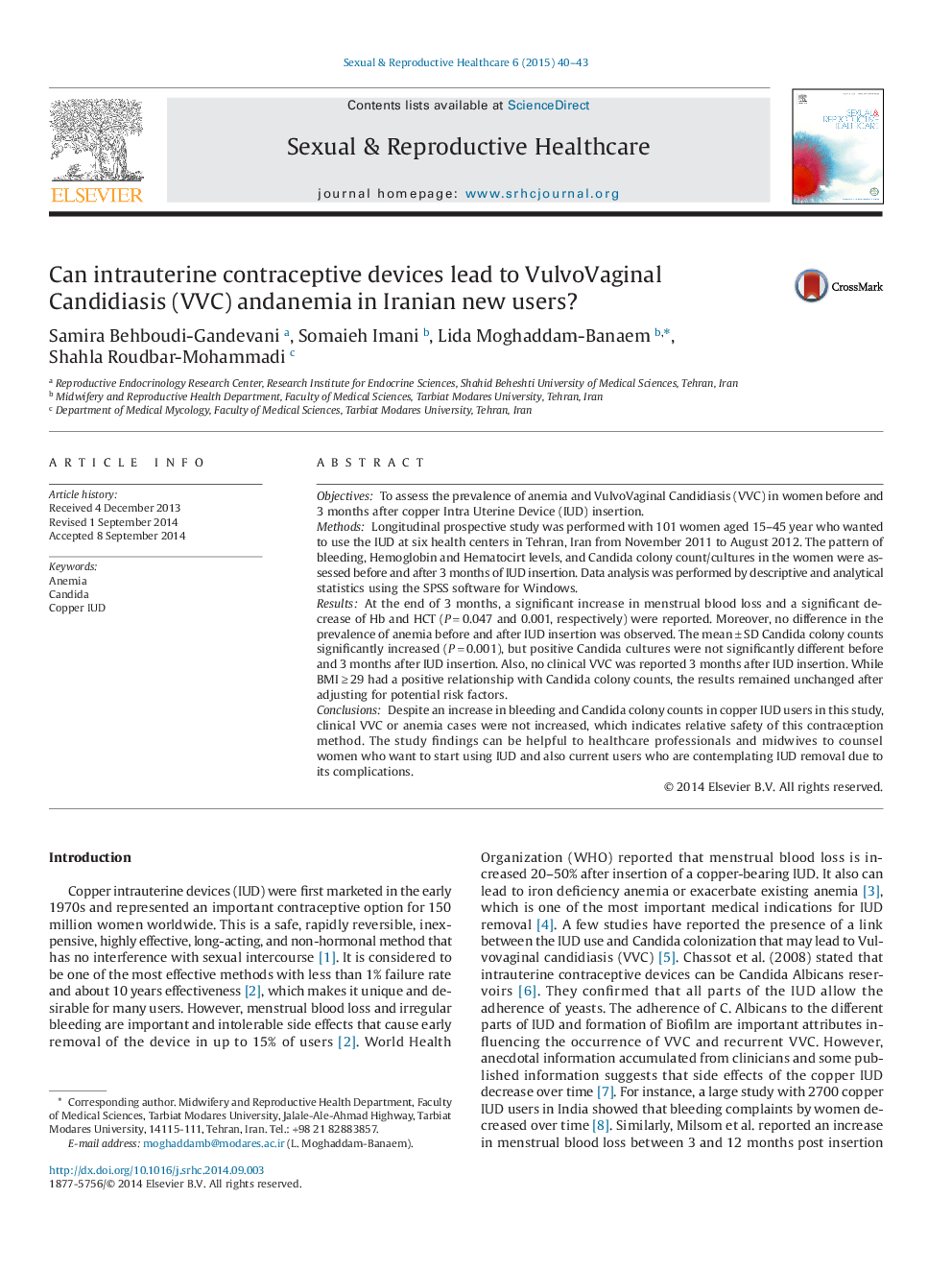| کد مقاله | کد نشریه | سال انتشار | مقاله انگلیسی | نسخه تمام متن |
|---|---|---|---|---|
| 2635938 | 1137369 | 2015 | 4 صفحه PDF | دانلود رایگان |
• Despite the rise of menstrual bleeding, this study indicated that the prevalence of anaemia remained unchanged after copper bearing IUD insertion.
• Candida colony counts significantly increased 3 months after copper bearing IUD insertion.
• The study indicated that the positive Candida culture and the prevalence of VulvoVaginal Candidiasis (VVC) remained unchanged after copper bearing IUD insertion.
• To get higher degree of evidence, further studies with another research design with a control group of non IUD-using women also are needed.
ObjectivesTo assess the prevalence of anemia and VulvoVaginal Candidiasis (VVC) in women before and 3 months after copper Intra Uterine Device (IUD) insertion.MethodsLongitudinal prospective study was performed with 101 women aged 15–45 year who wanted to use the IUD at six health centers in Tehran, Iran from November 2011 to August 2012. The pattern of bleeding, Hemoglobin and Hematocirt levels, and Candida colony count/cultures in the women were assessed before and after 3 months of IUD insertion. Data analysis was performed by descriptive and analytical statistics using the SPSS software for Windows.ResultsAt the end of 3 months, a significant increase in menstrual blood loss and a significant decrease of Hb and HCT (P = 0.047 and 0.001, respectively) were reported. Moreover, no difference in the prevalence of anemia before and after IUD insertion was observed. The mean ± SD Candida colony counts significantly increased (P = 0.001), but positive Candida cultures were not significantly different before and 3 months after IUD insertion. Also, no clinical VVC was reported 3 months after IUD insertion. While BMI ≥ 29 had a positive relationship with Candida colony counts, the results remained unchanged after adjusting for potential risk factors.ConclusionsDespite an increase in bleeding and Candida colony counts in copper IUD users in this study, clinical VVC or anemia cases were not increased, which indicates relative safety of this contraception method. The study findings can be helpful to healthcare professionals and midwives to counsel women who want to start using IUD and also current users who are contemplating IUD removal due to its complications.
Journal: Sexual & Reproductive Healthcare - Volume 6, Issue 1, March 2015, Pages 40–43
